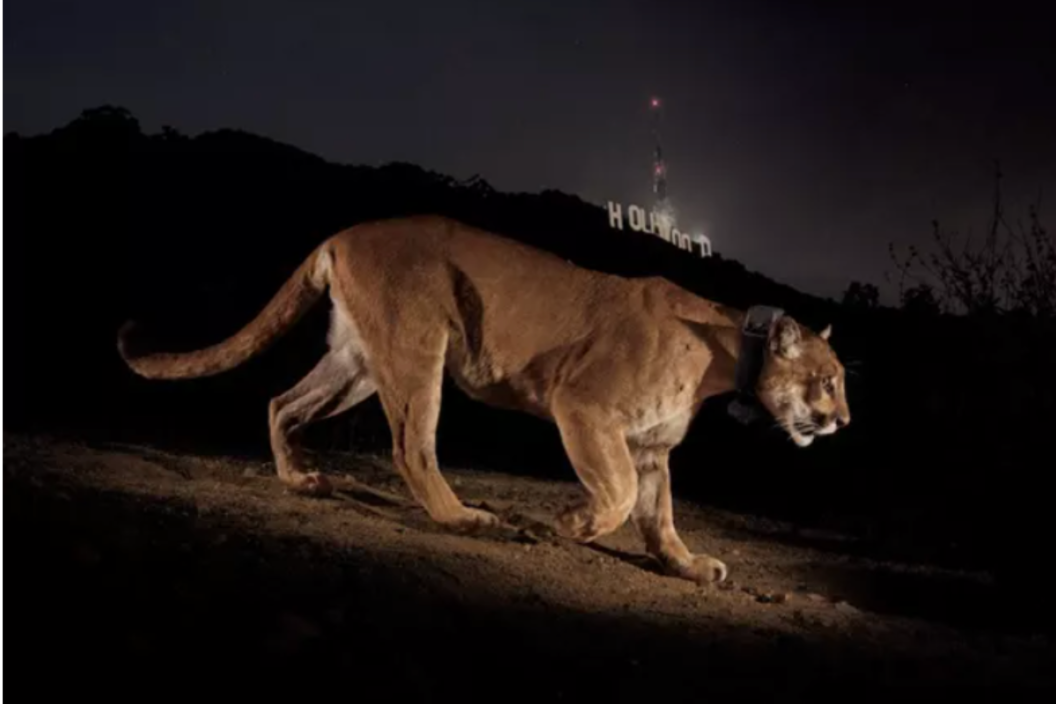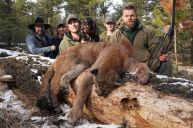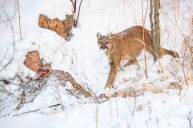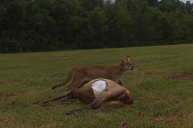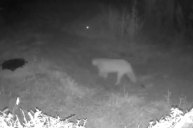California Fish and Wildlife officials have captured Los Angeles's most famous mountain lion, P-22. He has long been a fixture in Southern California neighborhoods, often seen wandering around Griffith Park and nearby areas. However, the big cat has recently been spotted getting closer to people's homes. After various reports of encounters with P-22, along with confirmation that the predator killed a leashed Chihuahua in the Hollywood Hills, authorities put a trapping plan in place to capture and evaluate him. The cat's increasingly aggressive behavior has made it clear that his health may be declining and he could be suffering.
"P-22 is a remarkably old cat in the wild and, after being deemed responsible for killing a leashed pet last month, may be exhibiting signs of distress," said the California Department of Fish and Wildlife in a joint announcement with the National Park Service.
CDFW and NPS believe that the mountain lion is at least 12 years old, while most mountain lions live to be about ten. "This is an unprecedented situation in which a mountain lion has continued to survive in such an urban setting. As P-22 has aged, however, the challenges associated with living on an island of habitat seem to be increasing, and scientists are noting a recent change in his behavior," the state wildlife department said.
P-22 wears a tracking collar, which shows him crossing freeways and hunting deer and coyotes. After authorities determined the big cat needed help, he was captured in a Los Angeles resident's backyard and taken peacefully to be evaluated.
"Following that evaluation, CDFW veterinarians and NPS biologists will determine the best next steps for the animal while also prioritizing the safety of the surrounding communities," the CDFW wrote in a statement.
P-22 is known as the "Hollywood Cat" and even made it into National Geographic after his picture was taken below the Hollywood sign. He is the face of NPS and CDFW's tracking collar program and has garnered worldwide attention for years. According to the New York Times, he was captured in the backyard of Los Felix resident Sarah Picchi. "Everybody in my neighborhood has been watching the sightings," she told the publication. "People are concerned about P-22."
Picchi and her husband watched officials tranquilize and wrap P-22 in a tarp to carry him out of her yard. She pointed out that many people are concerned with the cat's well-being since he is such a symbol in the city: "They feel a lot of empathy for him because he's kind of on his own. There's this wild animal that is kind of an Angeleno himself."
Officials are working on finding the "most humane option available" for the big cat. He has led a long, solitary life roaming around the hills of Los Angeles, which concerns Beth Pratt, National Wildlife Federation's California executive director. She believes that sanctuary life might be too hard of a transition for the lone animal. Still, Pratt is "glad he's now under safekeeping" so officials can "find out what's going on." She was relieved that he was in good hands.
"P-22 has given us so much," Pratt said in a statement. "He is a beloved wild mountain lion that survived against all odds, and his plight of being trapped in Griffith Park after making a perilous journey across two of the busiest freeways in the country showed the world how harmful our roadways can be to mountain lions and all wildlife. He captured the imagination of people around the globe, and his story inspired the building of the world's largest urban wildlife crossing outside of Los Angeles so that other area mountain lions don't suffer the same fate."
